 |
||
|
||
| ||
 Finally, this one is noiseless... CONTENTSWe keep on reviewing High-End graphics cards which are arriving in the market. Unfortunately, we haven't got the RADEON 9800 PRO yet, that is why let's focus on a tiny brook of the GeForce FX 5800 Ultra based cards. They are quite difficult to find yet, and the prices are hiked. Yet before the tests I can assert that such products are not worth their expenses. Our tests show that the RADEON 9800 PRO is currently the fastest 3D game accelerator. Even today, even the card's just been launched and its price is incredibly high, it's still cheaper than the GeForce FX 5800 Ultra in most cases. However, we shouldn't ignore this poor solution codenamed NV30 just because it became a rarity right after its release. Therefore, it costs even more than a High-End accelerator. Performance of such unique products is estimated in the following reviews.
The GeForce FX 5800 Ultra, however, has some advantages: first of all, its rarity (only 100,000 chips were made, 50,000 of which were used for Quadro FX for 3D professionals, 30,000 for GeForce FX 5800 for OEM companies and only 20,000 chips for retail cards, - if you divide this figure by the number of partners who had a desire to bring out 5800 based cards, the figure will be very low). Secondly, the speed the latest accelerators can reach is enough for most games even in the heaviest modes of AA and anisotropy. That is why RADEON 9700 PRO, GeForce FX 5800 Ultra, RADEON 9800 PRO are approximately equal, - the difference can be noticed only in the benchmarks and FPS counters. 120 or 140 fps.. it won't matter for you (I don't mean quakers who play mostly in 640x480 with the minimal graphics settings where a CPU is more important than a video card). If you enable AA and anisotropy, the gap will be even smaller. Hence the question: what else is this card able of, except 3D, how stable is its operation on different platforms and in different games, and what else can I get from the card which is as expensive as a good audio system? Besides, the GeForce FX 5800 Ultra will quickly be sold out with the advent of NV35, and the hiked prices for the 5800 will crash down. Such cards will be bought up by users who believe that NVIDIA's products are the best and most stable in the whole world, especially because they are few. But despite multiple downsides of the GF FX, these cards are still interesting for many PC users dealing with 3D graphics. Their strong and weak points are passionately discussed in many forums. That is why we keep on examining the GF FX 5800 Ultra to keep track on changes with the newer drivers. No secret that this chip is very flexible, and much depends on the software. It's also interesting whether the imperfect AA quality or its lack is done away with in certain games with the AA forced. The card we have today in our lab is particularly unique. Leadtek's card has a special cooling system. Leadtek is a well-known company, and we are moving right to the card in question. Card
Overclocking
Note that
 Testbed and driversTestbed:
VSync off in drivers, texture compression off in applications. Texture detail set to High Quality. Video cards for comparison:
Test resultsBefore we start examining 2D quality, I should say there are no complete techniques for objective 2D quality estimation because:
As for the sample tested, together with the ViewSonic P817 monitor and BNC Bargo cable it showed excellent quality at the following resolutions and clock speeds: |
||||||||||||||||||||||||||||||||||||
| Leadtek WinFast A300 Ultra MyVIVO | 1600x1200x85Hz, 1280x1024x120Hz, 1024x768x160Hz |
3D performanceTest applications:
Today we have two aspects for analysis:
3D graphics, game tests
Quake3 Arena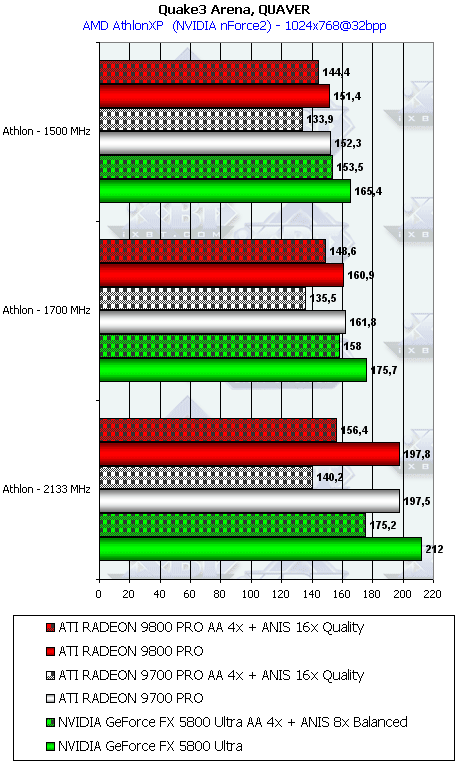 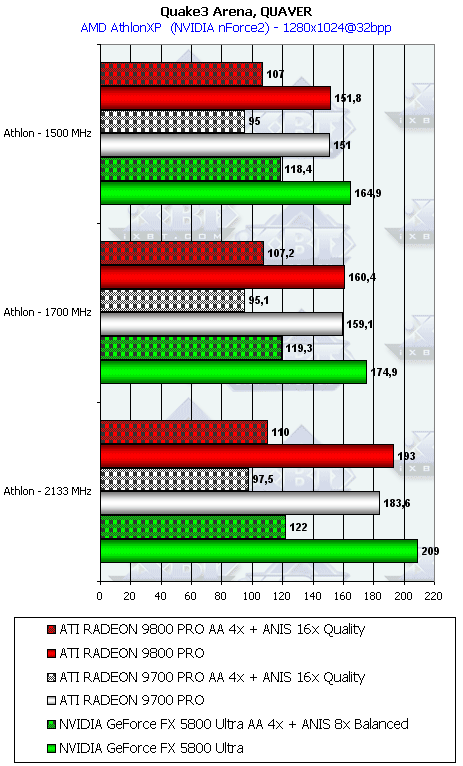 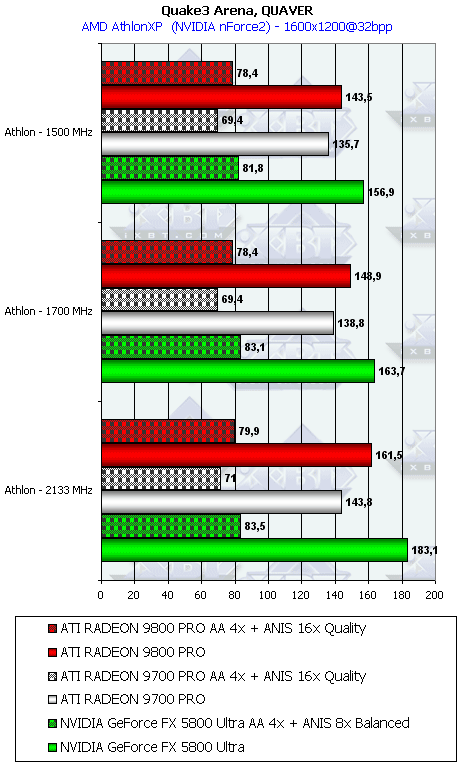 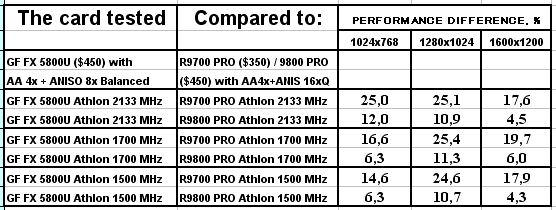
Serious Sam: TSE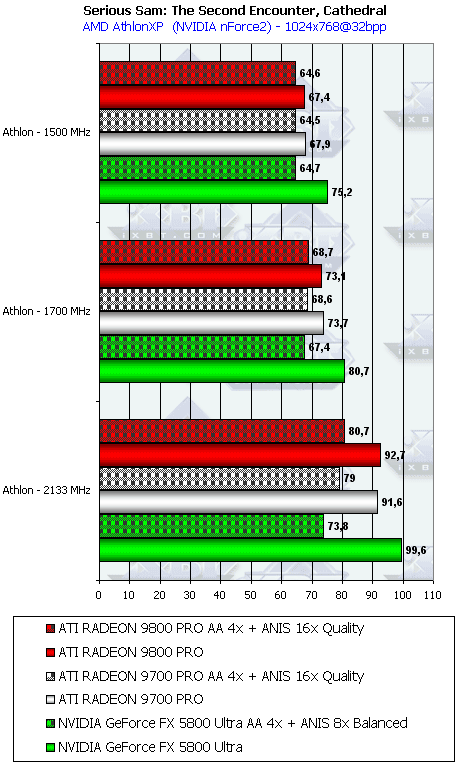 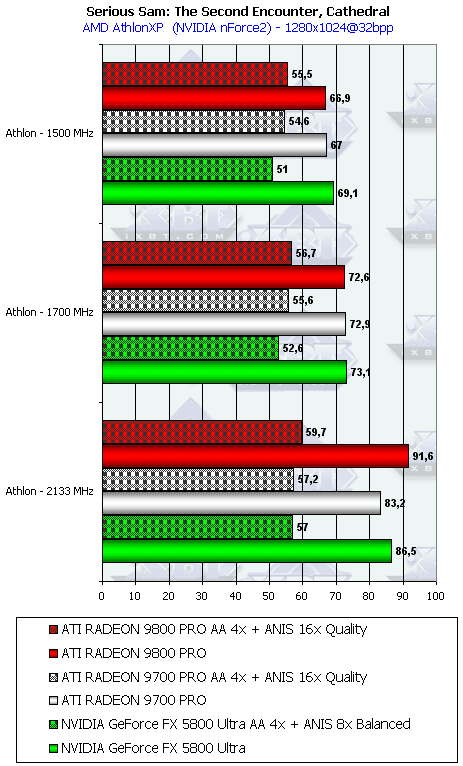 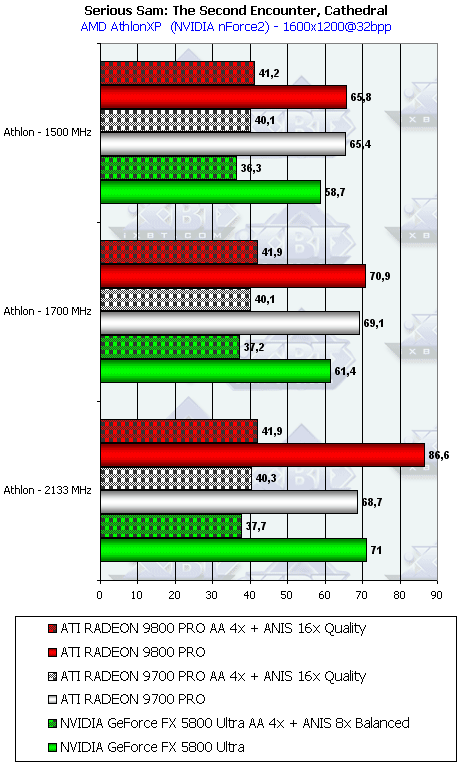 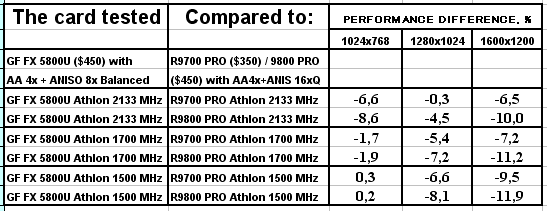
RtCW 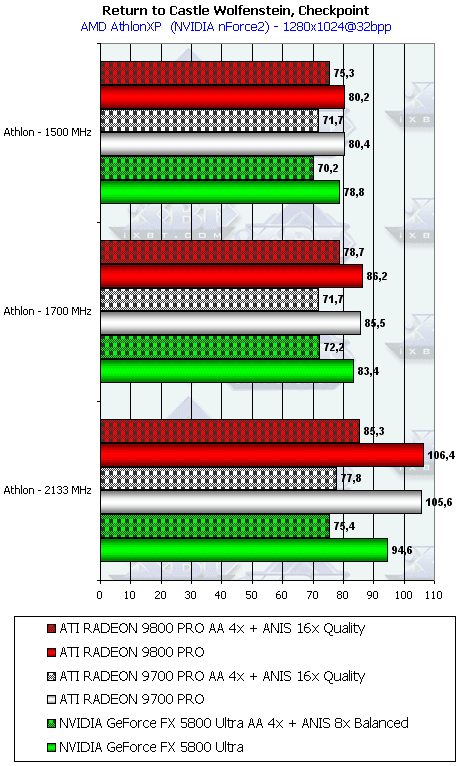 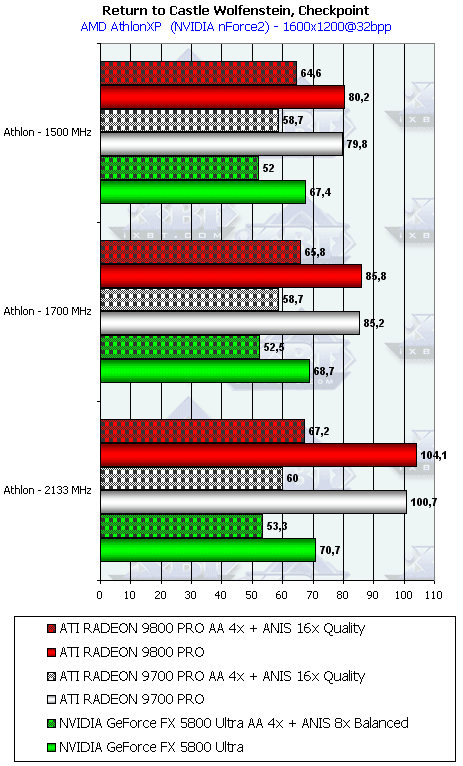 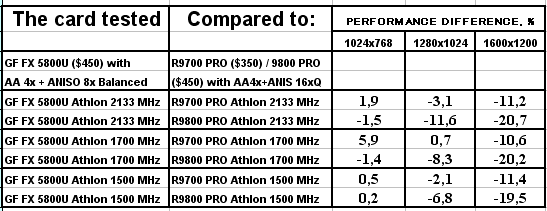
UT2003 DEMO 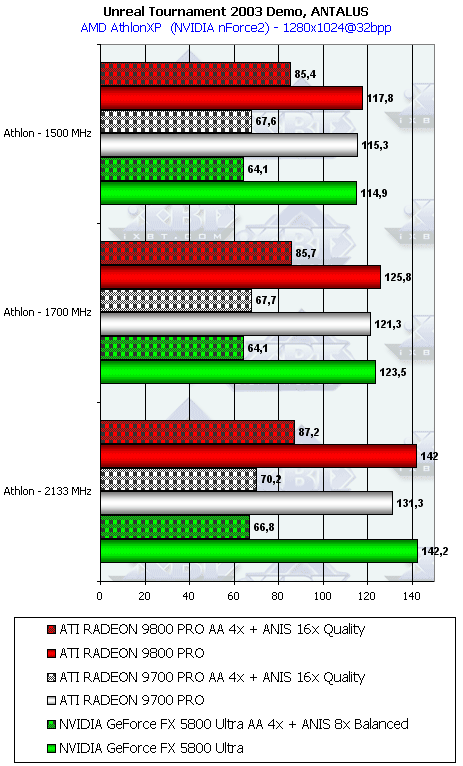 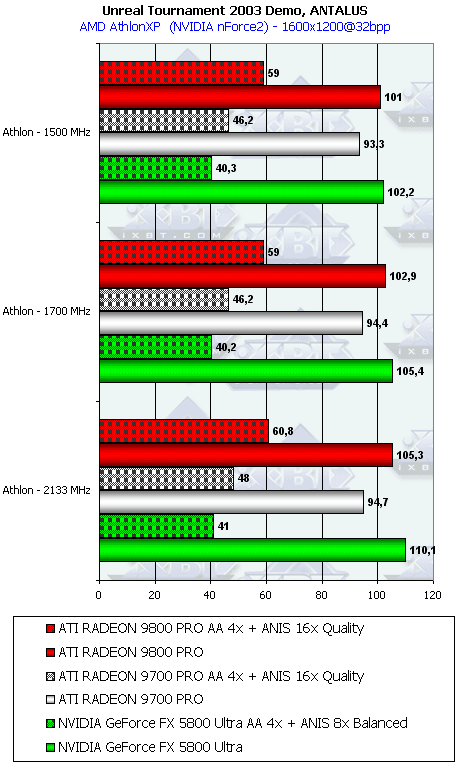 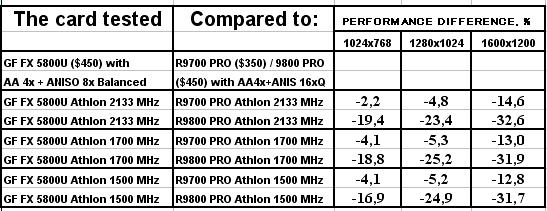
Rightmark 3D v.0.4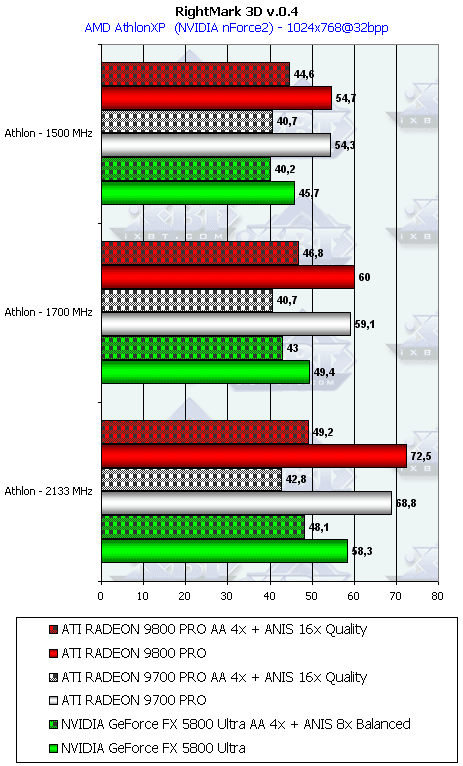 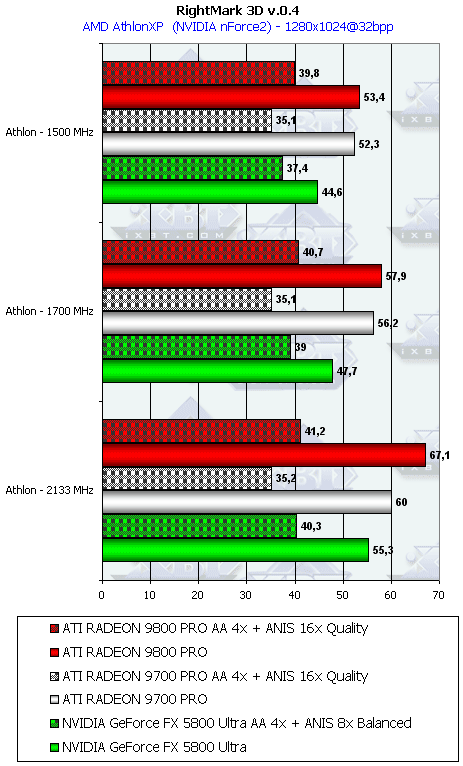 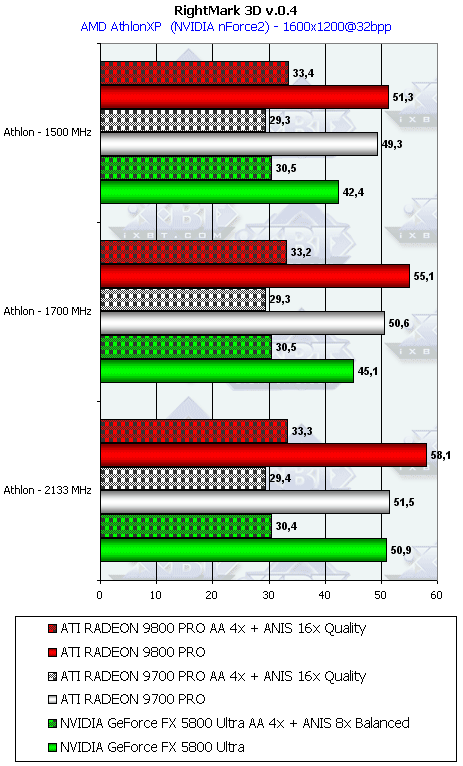 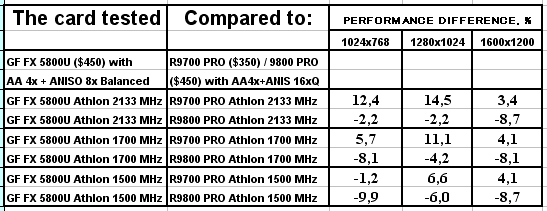 It's clear that the GeForce FX 5800 Ultra loses to the RADEON 9800 PRO, especially in the heavy AA and anisotropy modes (which are the main subject today). It will lose even if we take the price of the NV30 as $450 (the cards on our local market may cost $500), and the data on the RADEON 9800 PRO are based on the U.S. prices plus delivery costs etc. The real situation can be different, and most probably, it's not in favor of the GeForce FX 5800 Ultra. Performance vs. CPU's speed is clearly demonstrated above. In closing I must say that both cards worked flawlessly and stably. ConclusionIn spite of not so optimistic attitude towards this product, it has the right to exist. And it's for users to decide whether to buy it or not. I'm sure that the cards will be quickly sold out even at such high prices. Deficiency provokes growth of demand even for an unpopular product. In general, this Leadtek GeForce FX 5800 Ultra graphics card is the
best of what we've seen. It sports the VIVO support, has a low-noise cooler
and a good accessory pack. It's quite small at that.
Highs:
Lows:
Andrey Vorobiev (anvakams@ixbt.com)
Write a comment below. No registration needed!
|
Platform · Video · Multimedia · Mobile · Other || About us & Privacy policy · Twitter · Facebook Copyright © Byrds Research & Publishing, Ltd., 1997–2011. All rights reserved. |